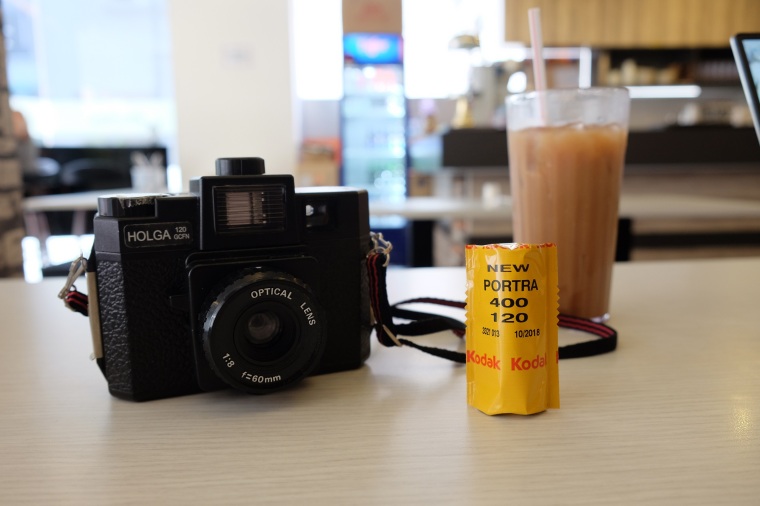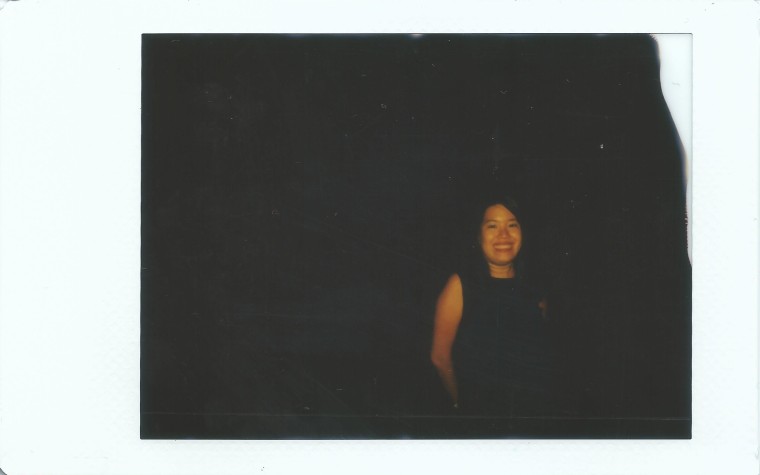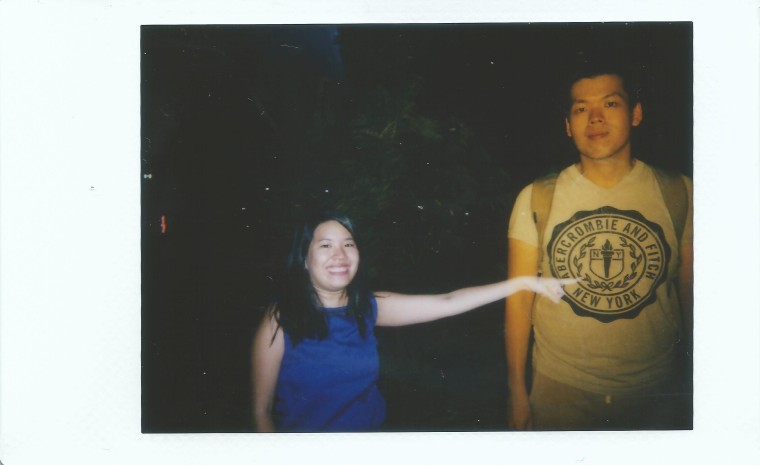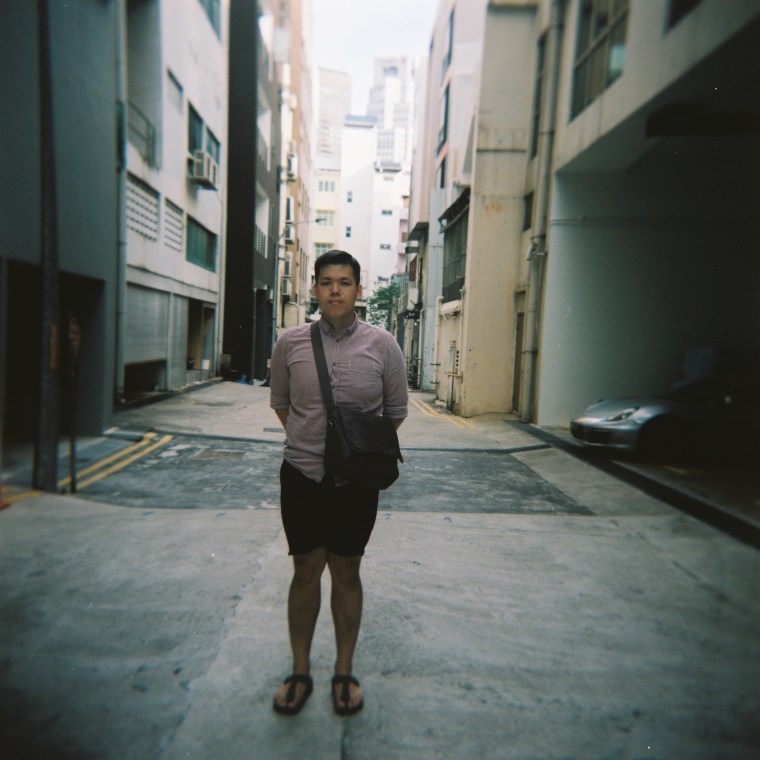Hey everyone!
Some keen-eyed readers may have noticed that despite featuring many cameras so far, the Holga camera has never been featured in our website. To be honest, we did not own one (till now); we acknowledge that the Holga is a timeless classic camera which helped revitalise the interest of street/film photography in Asia (and beyond) since the early 1980s.
When we were researching on getting one, we were cognisant of the fact that the Holga camera production has been discontinued since late 2015. Thus, turning to the second-hand market (Carousell in Singapore, for starters), we purchased the Holga 120 GCFN camera at a good price, complete with different filter lens. The acronym “GCFN” refers to the build of the camera, which includes glass lens and colour flash options!

While we have reviewed Holga lens for digital cameras and the Fuji Instax mini 7s we have always appreciated the Holga camera for its artistic impressions through the vignetting, blur and various distortions. It is not (by any stretch of the imagination) meant to be a professional camera producing high quality images. In fact, the simple, everyday camera won the hearts of street photography enthusiasts and those who enjoyed challenging themselves with different perspectives.
Specifications
- The Holga 120 GCFN (“Holga”)is a Glass Lens Medium Format Film Camera with built-in color flash. It produces the well known Holga-style classic lo-fi photos with the shadowy vignettes, unpredictable light leaks and soft focus in your square shots.
- It can accommodate all 120 medium format films. When we purchased the Holga, it came with two different film size of frame masks, so that it can take both traditional (35mm) and square (120 film) format pictures.
- As mentioned, the Holga includes a built in flash with a spinning color wheel for your choice of red, yellow, blue or standard white flash. It uses two AA batteries to operate the built-in flash (which can be switched off). Nevertheless, it can still take photos without batteries.
- The Holga is basically a fixed focus camera, however, it offers four choices of object distances, which ranges from 0.9m to infinity.
- There are also two choice of aperture are available: f/8 & f/11. Multiple exposure can be achieved by simply capturing another shot instead of winding the film.
Once we got our Holga 120, we immediately put it to work. Follow us on our journey in exploring Singapore, utilsing instax mini films, 120 film, and 35mm film!
120 film
Since the Holga 120 is made for, well, 120 film, let’s start by showing the digitised 6×6 shots:
Overall, we are very impressed with the clarity of the glass lens (as seen by some of the sharper images above. There were barely any light leaks, and yet it retained the traditional vignetting of the images. We used the Kodak Portra 400 film. Generally, one may need to set a longer shutter speed if using lower ISO films. Lastly, the bulb mode was very useful for low light environments, especially for capturing light trails!
35mm film
At the outset, we observed that not many people use the Holga 120 for 35mm film; Holga had created specific cameras which used 35mm film (such as Holga 135 TLR). Nevertheless, in the spirit of creativity and curiosity, we decided to test it out! Naturally, since the 35mm film is smaller in size than the 120 film, we would be able to get more frames out of the roll. Check out our selected photos below:
Our impressions of the 35mm film with the Holga 120 are largely consistent with that of the 120 film above; the images were sharper than expected (perhaps due to the glass lens). We used the Fujifilm Xperia 200 (35mm) film. We did however experience some initial challenges with using the 35mm film.
For starters, when loading the film, we needed to tape the ends of the spool before winding it up. Further, when advancing the frames, one would need to rely on a sticker guide pasted above the film advance knob; otherwise, one will have to listen for the ‘clicking’ sounds and count accurately when winding to the next frame. Lastly, since there is no rewinder for the film, a dark room bag (at the least) would be required to remove the 35mm from the camera spool.
Instax Mini
Last but certainly not the least, the Holga 120 has an instant mini back, which we had earlier received for free. While packfilm was previously used to make “Holgaroids” (a portmanteau of “Holga” and “Polaroids”), in light of its discontinuation, we decided to opt for the cheaper and widely-available option. There is also the instax wide back for the Holga, but we were aware that the incompatibility of the frame size would result in small-frame shots on the instax wide.



Generally, the Fujifilm Instax Mini film has an ISO of 800. However, we find that the ISO 800 is different from the 800 35mm type film. Based on our experiences, the Fujifilm Instax Mini film seems to have an ISO on 640 (as tested with our light meter in order to achieve a well-composed shot). Due to the glass lens, the Holga 120 does produce sharp images (ironically, sharper than the Lomo’ Instant cameras).
However, one major drawback is that the instant back winder is manual, and may not actually eject films, even when winding. It happens at random, so it is unfortunately something that we may not be able to resolve at the moment.
Our Closing Thoughts…

Often times we forget that the simplest, most basic objects can challenge us to produce quality photos; by this we do not simply mean sharpness of the photos, but in terms of meaning, composition and so on. Using the Holga 120 has only provoked our creativity and allowed us to explore new techniques with it! Furthermore, the Holga is indeed an ‘every-man’ camera, since it is lightweight and portable. Lastly, with its discontinuation, it will surely become a rarity in the future, so treasure that Holga!
Till next time,
Damianwithsandra


















My first ever camera was actually the holga120. Yes it was the original normal plastic lens which was introduced to me by an army friend. Funny thing was he didn’t buy it in the end. I did haha. It was fun using it as medium format was such fun to play with. Sadly film was not very affordable and it costs quite a bit to get it processed. I moved on to digital soon after. Did you try the 35mm with sprockets? It’s a beautiful accessory that adds the film like effects to both top and bottom of your pictures! Do give it a try if you can. God bless! Btw love the double exposure!
LikeLiked by 1 person
Hi Ezekiel! Thanks for dropping by our blog. We are loyal readers of yours!
Wow, do you still keep your holga120 though? As a memento?
No, we have not tried using the Holga 135 with the 35mm sprockets! We saw a few second hand Holga 135 TLRs on eBay and Carousell. Will definitely consider investing on one! Thanks for the recommendation!
LikeLiked by 1 person
Yes I still have it. However it might be dusty n all lol. Looking forward to more contents from you both! Btw, where is the best place to shoot landscape to represent SG?
LikeLiked by 1 person
Thanks Ezekiel!
We think the best place would probably be around CBD/MBS area. We often see loads of Photographers with their tripods and drones, shooting the skyscrapers and water reflections!
LikeLiked by 1 person
Hi can you tell me where can i find instax back mini for holga? Thx
LikeLike
Hello, you could buy this Holga 120-IB back on eBay, but we wouldn’t recommend it. It is pretty lousy.
Link here: http://www.ebay.com/itm/111810528106
LikeLike
Hi,
I had a Holga 135bc about 7 years ago. Just wondering if you know if these cameras still work in dusty conditions?
LikeLike
Try triggering the shutter! If it moves, it should still work! 🙂
LikeLike